H-1B petitions by Indian firms drop, US Tech Dominate FY2025 approvals
Tata Consultancy Services (TCS) remained the only Indian employer in the top five. Amazon, Meta, Microsoft and Google lead the table.
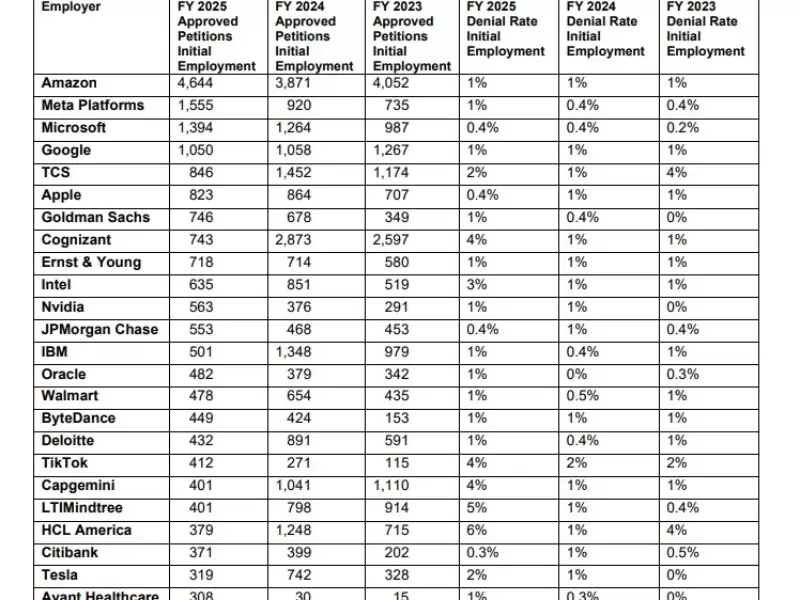 Approved H-1B Petitions and Denial Rates for Initial Employment: FY 2025, FY 2024 and FY 2023 / NATIONAL FOUNDATION FOR AMERICAN POLICY
Approved H-1B Petitions and Denial Rates for Initial Employment: FY 2025, FY 2024 and FY 2023 / NATIONAL FOUNDATION FOR AMERICAN POLICY
New U.S. government data for fiscal year 2025 shows a remarkable decline in H-1B visa petitions filed by India-based companies, even as America’s biggest technology firms deepened their dependence on foreign technical talent.
According to an analysis of the latest USCIS H-1B Employer Datahub figures by the National Foundation for American Policy (NCAP), H-1B petitions filed by Indian employers dropped 37% compared to FY 2024 and an extraordinary 70% compared to ten years earlier.
At the same time, US tech giants—Amazon, Meta, Microsoft and Google—have taken over the top tier of H-1B sponsorship, signalling changing hiring strategies and the growing localisation push within India’s own IT sector.
Amazon led all companies in FY 2025 with 4,644 approvals for initial employment, marking the highest number for any single employer. Meta followed with 1,555 approvals, trailed by Microsoft (1,394) and Google (1,050). Apple occupied the sixth position, strengthening the dominance of Silicon Valley majors on the list.
This is the first time these four US technology firms have collectively held the top four positions for initial H-1B approvals—an indication of how aggressively they are recruiting foreign engineers, particularly in areas such as artificial intelligence, cloud computing and data infrastructure.
The demand is tied to unprecedented capital spending. In 2025, these companies collectively poured an estimated $380 billion into AI and related technology investments. With that kind of financial commitment, hiring specialised talent from around the world remains essential.
Indian IT companies, meanwhile, have slipped down the rankings. Tata Consultancy Services (TCS) remained the only Indian employer in the top five, but even that position reflects shrinking numbers. It had 846 petitions approved for initial employment in FY2025.
LTIMindtree (401 approved initial petitions) placed 20th and HCL America (379 approved initial petitions) 21st, leaving just three Indian firms among the top 25 sponsors—an unusually small presence for a sector that once dominated H-1B usageExperts attribute the decline to several converging factors. Indian firms have increased local hiring in the United States over the past decade, both for political optics and operational practicality.
ALSO READ: Trump breaks with base on skilled workers
Simultaneously, evolving technologies and the rise of offshore and remote delivery have reduced the need to physically relocate workers to US client sites. Many Indian companies have also expanded their development centres in Mexico, Canada, and Eastern Europe, further distributing talent needs.
The geographic distribution of H-1B approvals within the United States remains uneven. California led all states with 21,559 approvals for new employment, followed by Texas (12,613), New York (11,436), New Jersey (7,729) and Virginia (7,579).
At the city level, New York topped the list with 7,811 approvals. Arlington, Virginia—home to Amazon’s HQ2—recorded 4,836 approvals, while Chicago (2,923), San Jose (2,383), Santa Clara (2,286) and San Francisco (2,222) rounded out the major hubs.
USCIS approved 114,806 petitions for initial employment in FY 2025. The denial rate for these petitions rose slightly to 2.8%, up from 2.5% in the previous fiscal year, but still far below the 24% denial rate seen in FY 2018 when Trump-era restrictive policies were in full force. For continuing employment—extensions and job-location changes—the denial rate was 1.9%.
A large share of H-1B holders continued to change employers, challenging the perception that visa rules bind workers to a single company. In FY 2025, 68,167 petitions were approved for workers transferring to new employers. When combined with initial approvals, roughly 37% of all H-1B professionals starting a new job in FY 2025 were moving from one company to another.
Despite criticism frequently levelled at the H-1B program, USCIS salary data shows that these workers are not low-cost substitutes. In FY 2024, the average annual salary for computer-related H-1B jobs was $136,000, with a median of $125,000.
Yet the core constraint on the system remains unchanged: the cap of 85,000 new visas per year. In FY 2025, about 442,000 unique individuals entered the H-1B registration system, meaning more than 300,000 qualified applicants were rejected purely because of the quota. The cap, representing just 0.05% of the US labor force, has been exhausted every year since 2004.
For now, the data paints a picture of a program under pressure, with demand far outstripping supply and the traditional dominance of Indian IT firms giving way to American tech giants hungry for specialised talent. The shift may be structural rather than cyclical, underscored by changes in global hiring patterns and evolving expectations for where and how technical work gets done.
ADVERTISEMENT
ADVERTISEMENT
E Paper
Video



1759953093.png) Staff Reporter
Staff Reporter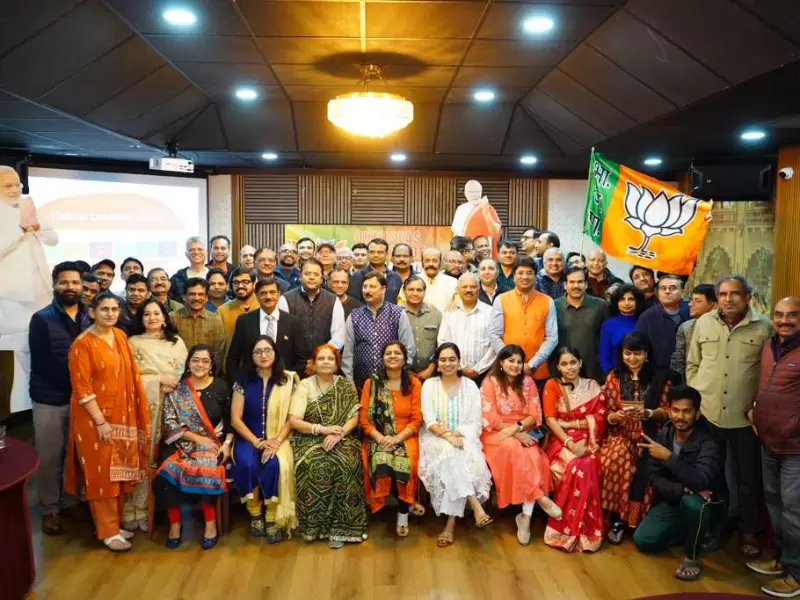

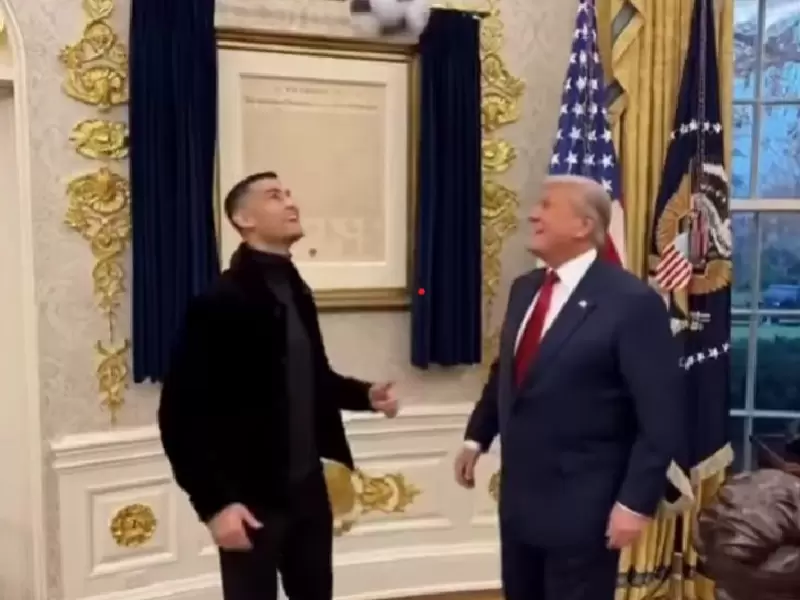
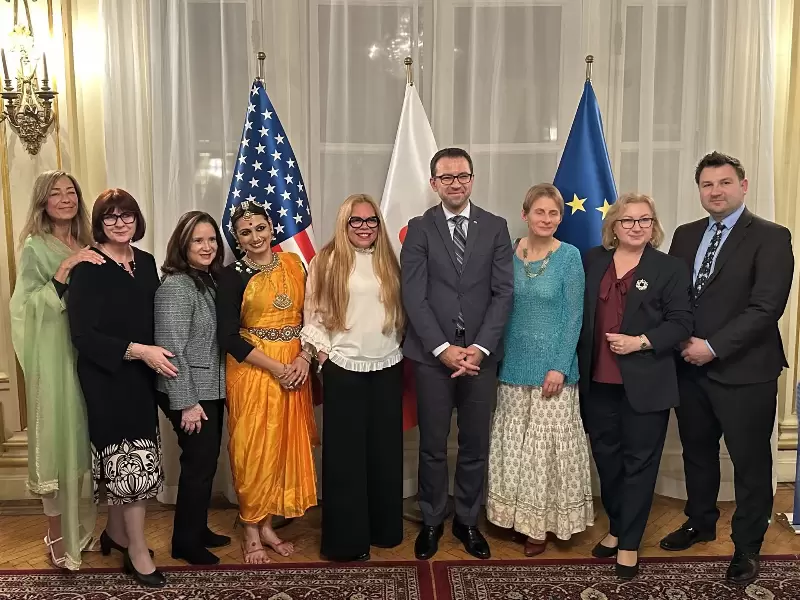


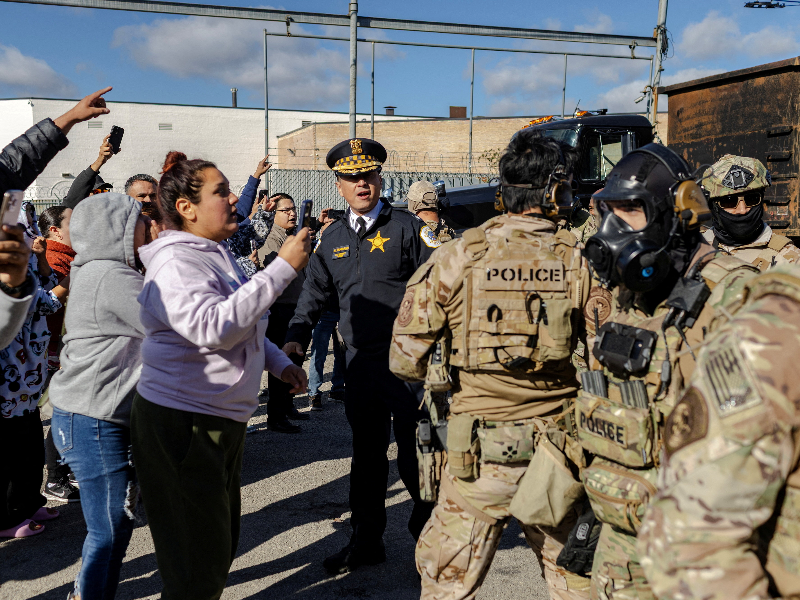
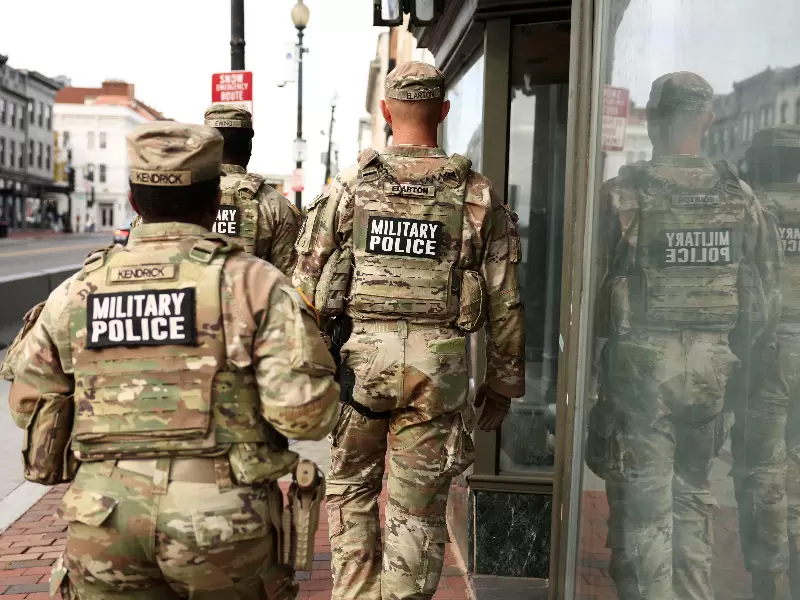


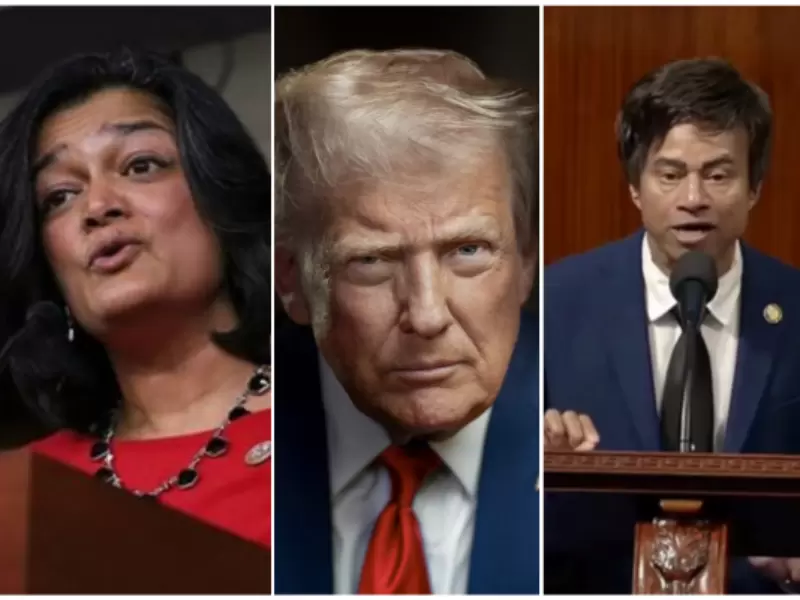

Comments
Start the conversation
Become a member of New India Abroad to start commenting.
Sign Up Now
Already have an account? Login